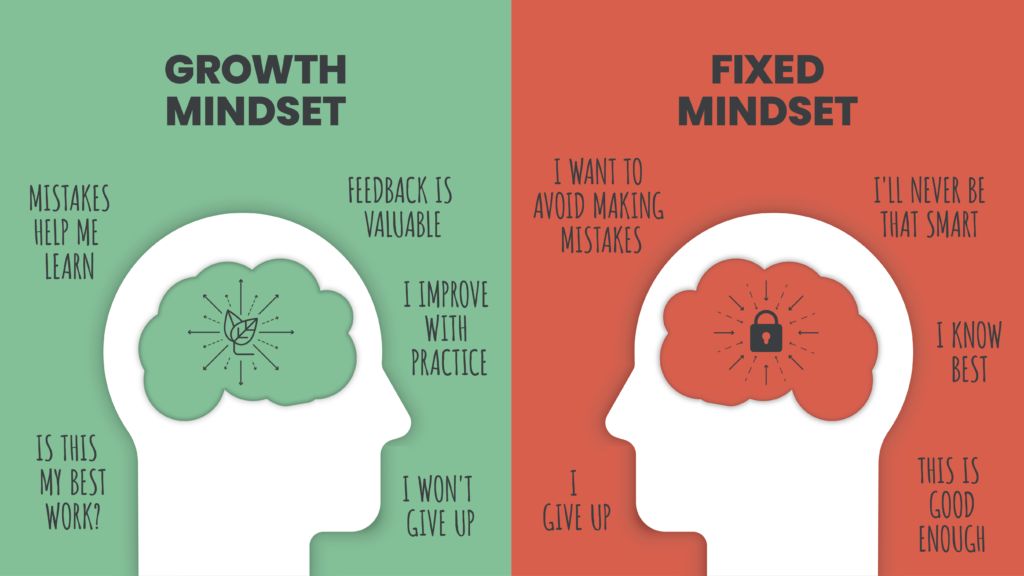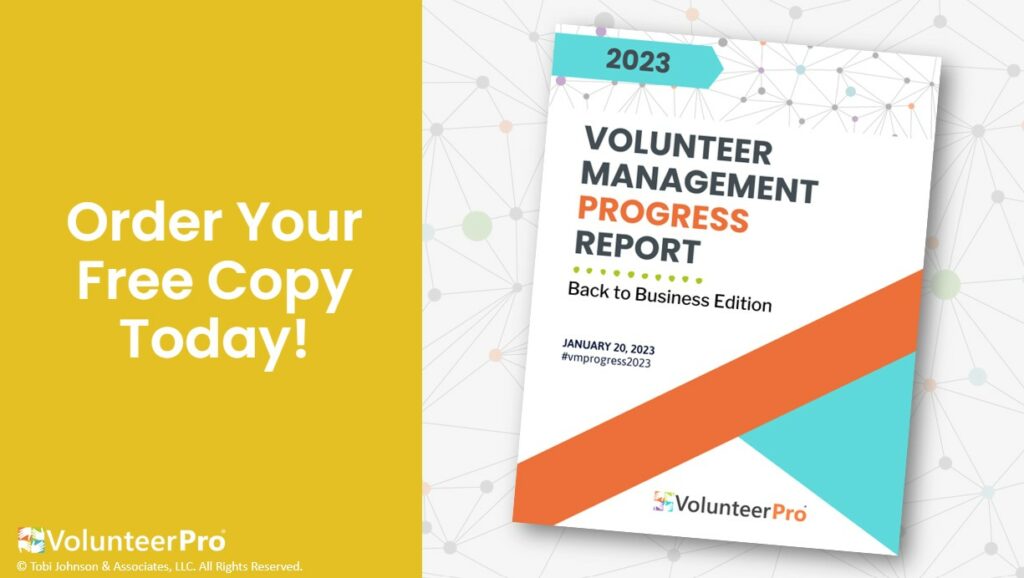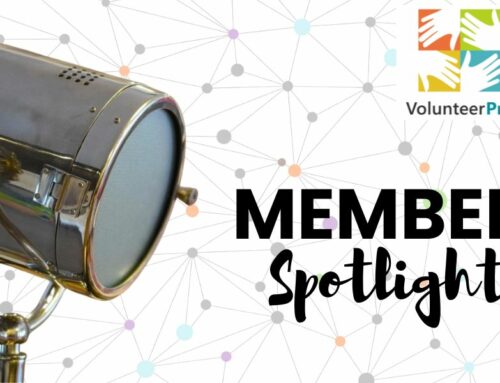Feeling Stuck? Help Your Team Pivot to a Growth Mindset
The concept of a growth mindset isn’t new but applying it specifically to nonprofits and volunteer engagement might be.
In this post, we explore how to help volunteers and the co-workers who lead them to ditch the fixed mindsets that are holding them back and adopt a growth mentality that helps them question knee-jerk reaction to change and reconsider what might be possible.
The Origins of the Growth Mindset
The idea of a growth mindset was first developed by psychologist Carol Dweck and popularized in her book, Mindset: The New Psychology of Success, back in 2007. Her original research was geared at helping students overcome learning challenges. More specifically, her research explored whether a shift in mindset could change learning outcomes.
Purchase your own copy of Dweck’s book through VolPro’s Amazon affiliate link HERE>> (As an Amazon Associate, VolPro earns from qualifying purchases.)
They found that when students understood that their brains were malleable and that their intelligence, and therefore achievement, was not destined, they changed how they approached their schoolwork, adopting what she coined a “growth mindset.”
Indeed, more recent neuroscience research has shown us that the human brain is far more changeable than we realized. Research has shown how connectivity between neurons can change with experience, growing new connections, strengthening existing ones, and building insulation that speeds the transmission of information. It’s now become common knowledge that we have more control over our brain’s plasticity than we ever realized.
Dr. Dweck’s team also found that a teacher’s support also had an impact on supporting a growth, versus fixed mindset. For example, praise that encouraged children by telling them they were smart encouraged a fixed mindset. Alternately, praising children for hard work and effort cultivated a growth mindset and thus, impacted results
Imagine how nonprofit staff might help worried volunteers build their confidence in their ability to take on a task simply by changing what words they use to support them.
By encouraging a growth mindset, staff can help volunteers overcome their fixed mindset doubts about their current personal capacities (e.g., the ability to learn to use modern technology tools) and replace them with enabling beliefs that everyone can grow into new skills and abilities.
For more on how our mindsets directly impacts our work with volunteers, check out Volunteer Nation Podcast Episode #023: Secrets to Managing Time and Energy HERE>>
Volunteer Supervision & the Growth Mindset
Here at VolunteerPro, we see fixed mindsets appear in both nonprofit employees and volunteers as they are presented with an organization’s ability to embrace the opportunity for change.
A growth mindset views intelligence, abilities, and talents as learnable and capable of improvement through effort. So, when staff do not embrace change, they may still be stuck in a fixed mindset.
Instead of the potential for change, they may believe that people are born with innate talents and can’t make the transformation required, even if they put effort into it. Similarly, they may have a fixed mindset that views the organization itself as inherently stable (“we’ve always don’t it this way”) and unchangeable over time.
For example, when they are resistant to bringing on volunteers and they’ve had a difficult experience with a volunteer in the past who has not met expectations, they may doubt their ability to achieve a better result. They may also view their efficiency as far superior to volunteers – “it’s just easier if I do it myself”). This represents a fixed mindset that views change as impossible.
However, equipped with a growth mindset, that same employee might see things differently. They might recognize that the more engaged volunteers are in their department, the more likely they will be able to scale their work. They might also understand that, as a supervisor, they are complicit in the outcomes of the people they supervise and that a change in how they support volunteers might result in an improvement in performance.
A growth mindset can also help employees see that individual volunteers can grow with the proper training, support, coaching, and tools. As human beings, if we have a will for change, transformation will happen.
When an employee has a fixed mindset about the potential of volunteer talent, then they don’t bother to have the kinds of crucial conversations they need to help volunteers improve. They neglect to offer clear, kind feedback that volunteers to improve.
For more tips on how to lead volunteers, check out Volunteer Supervision: It’s Time to Ditch Nagging in Favor of Inspiring HERE >>
Coaching a Growth Mindset Transformation
To address the fixed mindsets in co-workers and volunteers and encourage a new growth mindset instead, you’ll need to become hyper-aware of the ways that mindset shows up in your work. You’ll also need to be ready to coach at once.
I have a business coach that is helping me grow my business. One of her favorite things to say when I am communicating a limiting belief (AKA a fixed mindset) is to respond with a statement I’ve made with “If you say so.” Rather than pointing out the direct limiting belief that is blocking my progress, she poses a question that asks me to reconsider – is this or is this not possible?
Upon deep examination, most things are possible if they are given enough time, effort, willingness to change, and sometimes budget. The point is not to take on every opportunity, but rather to focus on those that serve your organization and your energy well. The point is also to move from an automatic “no it can’t be done” (fixed mindset) to “let’s explore if this is possible and if it makes sense overall, even if I have initial fears and doubts about it (growth mindset).
When you embrace a growth mindset, you have an opportunity to see all the options before you more clearly.
If you are working to bring co-workers and volunteers along, you may have to do a little nudging at first. Rather than calling out the limiting beliefs directly, help them begin to ask the questions – how can we …? – before they decide whether to move forward.
You might say something like this – “You know, I think there are areas for growth here. I think there are some things we can do to improve the situation. Would you be willing to explore solutions and even make a bet on one? What would we need to do? What would need to be in place to ensure success? What more information would we need? How could I support you?
As the coach, your language becomes much more expansive. It’s much more about possibilities and making calculated bets.
A similar kind of conversation might look like this – “Hey, you know what? I think there’s room for change here. What changes would be most helpful to you? What can we do together? We don’t need to let perfection stop us. Are you willing to try, even if the results aren’t perfect? We might learn a few things along the way!”
Again, we are encouraging our teammates to take informed chances. We are also reassuring them that perfection is not the goal and that there is value in the learning process.
With a growth mindset, the goal is to keep things in perspective but to also encourage a bias toward action. Only by taking action are we able to get clear on processes in real life. We must have faith that, if we are attuned to our journey, the path will become clear. And it is not necessary (or possible) to have certainty about the future.
Similarly, we can apply the growth mindset to our own work in leading volunteers. Consider where limiting beliefs are holding you back. For example, “I’m not a tech person” or “I don’t like numbers”, or “I really hate giving bad news and letting a volunteer go.”
There are all kinds of things we believe that we are we’re not good at or cannot do. That may be the case – everyone is not an expert at every task. We all have our zones of genius. A growth mindset says we may not be good at it now, but we can get better at it with effort. It might also say, maybe there’s someone else that can take this task on who knows it better than me and free up my time to work my strengths.
The bottom line is this: when you are engaged in planning changes to your volunteer program, or starting new initiatives, be on the lookout for fixed mindsets (in yourself and others) that might be clouding your vision of the possibilities ahead.
If you hear (in your own head or communicated by others) things like “we’ve tried to do that in the past and it doesn’t work,” slow down and consider the options.
Think to yourself, is it possible that it could work? And what could we do differently to make it work? Exploring all the options doesn’t commit you to a specific path. It also doesn’t mean you have to revisit every failed project. What it does mean is that you are actively questioning any limiting beliefs at play.
Going forward, challenge yourself and others to adopt a growth versus fixed point of view. Notice opportunities, explore the options, and take chances. Soon you’ll begin to reap all the rewards a growth mindset can bring to your volunteers and your organization as a whole.
Reinforce Your Decisions with Hard Data
When you’re at a fork in the road, sometimes it’s hard to choose a direction. Data can help.
Our 2023 Volunteer Management Progress Report: The Back to Business Edition includes the data you need to understand how your organization compares with others who engage volunteers.
In this annual state-of-the-industry survey, we cover topics like …
- What are the top challenges for leaders of volunteers in today’s environment?
- What are the median salaries for leaders of volunteers and how do they compare to pre-pandemic levels?
- Are the demographics of volunteer managers changing and becoming more diverse?
- What are the staffing levels for volunteer services teams and supervisor-to-volunteer ratios?
- How has the pandemic impacted volunteer participation levels and where are they now?
- What outcome and impact tracking mechanisms are currently in use by volunteer-involving organizations, and what are their results?
- And more …
Use the survey results to reflect on your current volunteer engagement practices, benchmark your results and advocate for change.
Grab your FREE copy of the 2023 Volunteer Management Progress Report HERE>>
Got questions or want to be a distribution partner for next year’s survey? Email us at wecare@volpro.net to learn how!








